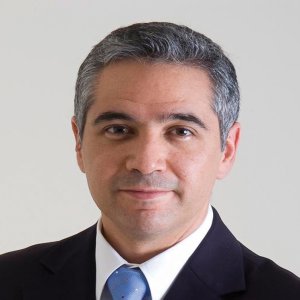Supplier Development Key Priority

Supplier Development Key Priority

STORY INLINE POST
Q: Do you view the Mexican automotive industry supply chain as becoming progressively more sophisticated?
OSE: In Mexico, Tier 1 suppliers are well-established with good links to manufacturers, but the Tier 2 suppliers are not in the same position and a lot of components are still being imported. As more plants come here and the industry evolves, that will need to improve. From the perspective of the Mexican government, it does not make sense for all these goods to be imported from other countries when they could be manufactured here and create jobs. For international trade purposes, the OEMs need a certain percentage of Mexican content in order to benefit from incentives, which is why some companies want to bring more production into Mexico. With the entry of new OEMs, the pressure to develop the supply chain is increasing.
AY: From a production point of view, it is better if local sourcing increases since this decreases the risks associated with foreign currency exposure, quality control, and logistical time. Most Tier 1, 2 and 3 suppliers are international companies, and there is still little Mexican investment in the automotive industry, with a few exceptions. This has to change but the reason why there is no Mexican investment going into the automotive industry remains unclear. It is difficult to pinpoint the exact barriers, whether this is due to a lack of interest or experience in the automotive industry. Another risk is that entering the automotive sector requires a high initial investment.
Q: Do OEMs tend to prefer bringing in their own suppliers or to develop the local supply chain?
OSE: Japanese manufacturers are more concerned with bringing their own Japanese suppliers because it is faster and easier for them to do so. If a company is already established somewhere else, replicating the process here is just a matter of copy and paste. But as the government continues to realize the increasing importance of the automotive industry, it will drive the local supply chain and create proper programs to make Mexican suppliers more competitive. The government already has an automotive program for OEMs but there are no established incentives for suppliers. It remains easier for companies to bring in their own suppliers than to develop a Mexican supplier base with no experience.
Q: What challenges do you see in accessing human capital by the automotive industry?
OSE: In the future, there will be additional pressure for sourcing human capital. There is a good level of availability in the Bajio area for common labor as there are many people that can be trained. These workers are regarded as highquality labor, which is one of the reasons why manufacturers are beginning to bring their luxury vehicles to Mexico. We were used to being a compact and sub-compact market, but we are starting to see more sophisticated vehicles. However, this becomes more difficult at the higher skill levels, such as engineering and plant production managers. We are seeing some companies having to import their managers from abroad, which will become an issue in the near future.
AY: Germany has a system called the Dual Educational System where students work and go to university at the same time. Some German companies are trying to implement something similar with universities in Puebla and Queretaro. These are two manufacturing hubs which have received a lot of German investment. If this works, a typical engineer could study and work in an automotive company at the same time.
Q: How sophisticated are dealerships in terms of customer service to drive car sales?
AY: Dealers still think their business lies in selling cars, but in countries like the US, money is found in servicing. While that is beginning to be understood by dealers, OEMs are struggling to increase control over that side of the business. A client that needs servicing might not go back to a Mexican dealership after their first experience, assuming that the service is bad. This represents a loss for OEMs and dealers alike. A new trend that has arisen globally is multi-brand dealerships and this has yet to happen here in Mexico.
OSE: Dealership networks are evolving and this change is mostly driven by OEMs, as they are putting customer relationship programs in place. These changes are evolving at a good pace in Mexico, but not as fast as in other countries. In fact, Mexico is pretty far behind but we have to remember that most dealers here are family-owned businesses. These are becoming more sophisticated, and customer experience will become more important to them.



















